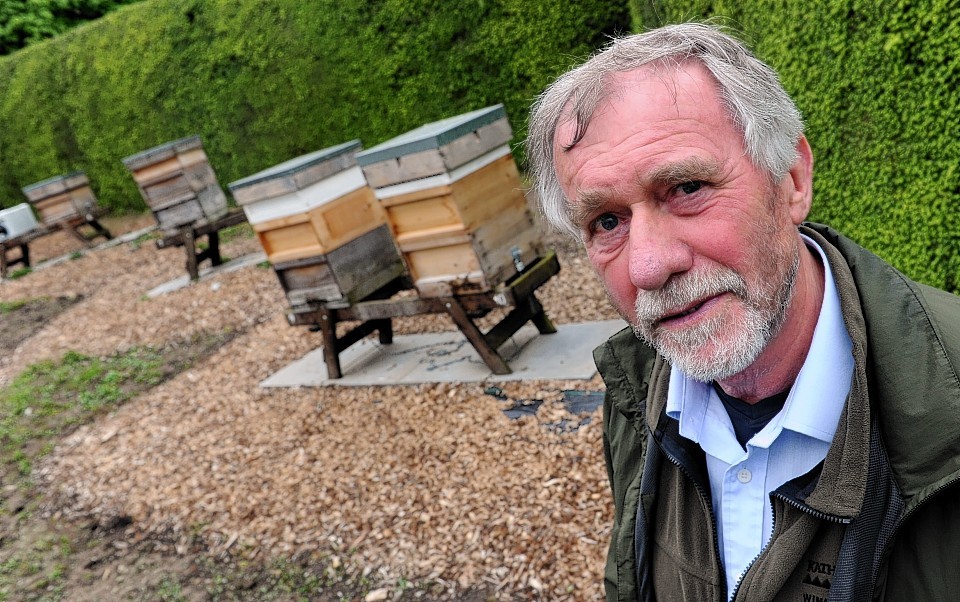North-east honey bees were welcomed to a new home in Aberdeenshire at the weekend.
The Aberdeen and District Beekeepers’ Association opened a new apiary in the grounds of Crathes Castle on Saturday.
About 50 people, mainly current members of the group, attended the ceremony to see the six hives and new log cabin which will provide teaching space and storage.
Chairman, John Cooper, said: “It was a really friendly and enjoyable gathering of beekeepers.
“We are very pleased to be at Crathes and the teaching apiary will give us somewhere our members, particularly our newer members, can learn more about bee keeping.
“We also have a very high-quality log cabin for storage of our materials and a big room for teaching, because, although bee keeping is an outdoor activity there are bits and pieces that are indoors.”
The Aberdeen and District Beekeepers’ Association was founded in 1910 and has 200 members from all over the north-east including Aberdeen, Banff, Deeside and Stonehaven.
There are several junior members, and enthusiasts in their 90s.
The group previously maintained an apiary at Craibstone which had been connected to the then-North East Agricultural College’s beekeeping department.
The group began looking for other premises 18 months ago when plans for about 600 houses at Craibstone were tabled by Cala Homes.
The move to Crathes was made possible through funding from the Aberdeenshire Leader programme and Scottish Natural Heritage.
The association also contributed £8,000 to the £30,000 project.
Mr Cooper said that while honey production was still an attraction for some beekeepers, the aim of the apiary would be to conserve the population.
He said: “The whole purpose of beekeeping these days is primarily to help bees stay alive.
“We want beekeepers to stay up-to-date with best practice for dealing with some of the serious problems that bees face as a species.”
The honey bee is threatened by an increasing number of pests and diseases – such as the Asian varroa destructor mite – and changes in agricultural practice and climatic differences.
